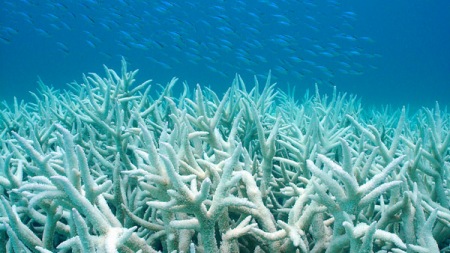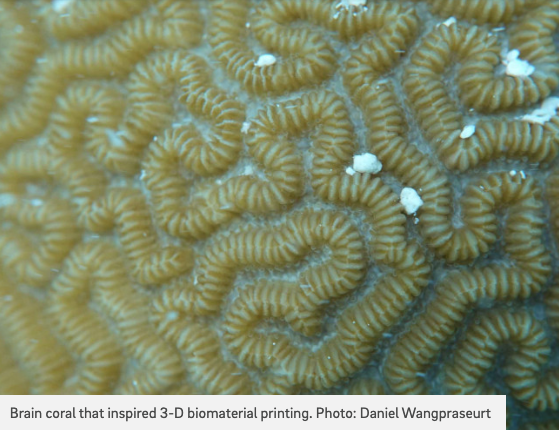A team of international scientists has produced the first 3D printed synthetic coral tissues that can house living symbiotic algae.
The team at the University of California built three different 3D-bioprinted corals, each mimicking either the skeleton, gut, or skin of living corals. The aim is for scientists to use these new tools to study the causes of coral bleaching, how to minimize it, and how to identify resilient strains of algae for the future. Their findings have been published in Scripps Institution of Oceanography.
“In the longer term, it may allow us to build living 3D-printed corals for restoration,” said Scripps Oceanography marine physiologist Martin Tresguerres.
3D bioprinting technology is allowing the team to study the individual parts of the complex symbiotic system one by one. With wild corals, even two coral colonies of the same species may coexist with different strains of symbiotic algae and microbes in different structural arrangements. That makes it difficult to understand the fundamental mechanisms of algae symbiosis when species are so different from each other. 3D bioprinting is helping to narrow that down.
“Because we can finely control light with special optics, we can create nanometer-to-microscale-structured 3D features in a couple of seconds,” said team leader Daniel Wangpraseurt, a marine biologist at UC San Diego’s Jacobs School of Engineering and Scripps Institution of Oceanography. “This is motivated by understanding the functioning and breakdown of the symbiosis, including phenomena such as coral bleaching.”

The technology goes back to 2020 when Wangpraseurt and co-authors published a paper in Nature Communications that described using 3D printing of polymers to mimic the coral skeleton and encapsulate green microalgae.
“The long-term goal would be, instead of using polymers to create the tissue scaffolds, to use living coral cells,” said Tresguerres. “The technology is similar to that currently being used for building human organs and tissues for biomedical purposes.”
Co-author Shaochen Chen, professor and chair of the nanoengineering at the UC San Diego Jacobs School of Engineering, pioneered the method for 3D bioprinting of organs and tissues used in the project.
The team mimicked the different skeletal porosities of the corals with 3D printing to see how they would affect the production of hydrogen peroxide. This toxic form of oxygen is a prime suspect in driving the loss of symbiotic algae from coral during the bleaching process.
The more porous skeleton allowed the hydrogen peroxide to flow away more easily than the less porous one, establishing a potential link to bleaching resilience.
“This highlights the importance of the skeleton microhabitat for physiological processes such as coral bleaching,” Wangpraseurt said. “Our future focus will be to have co-cultures of coral and algae cells growing in an artificial tissue, eventually developing a more stable synthetic symbiotic system that has enhanced longevity.”



